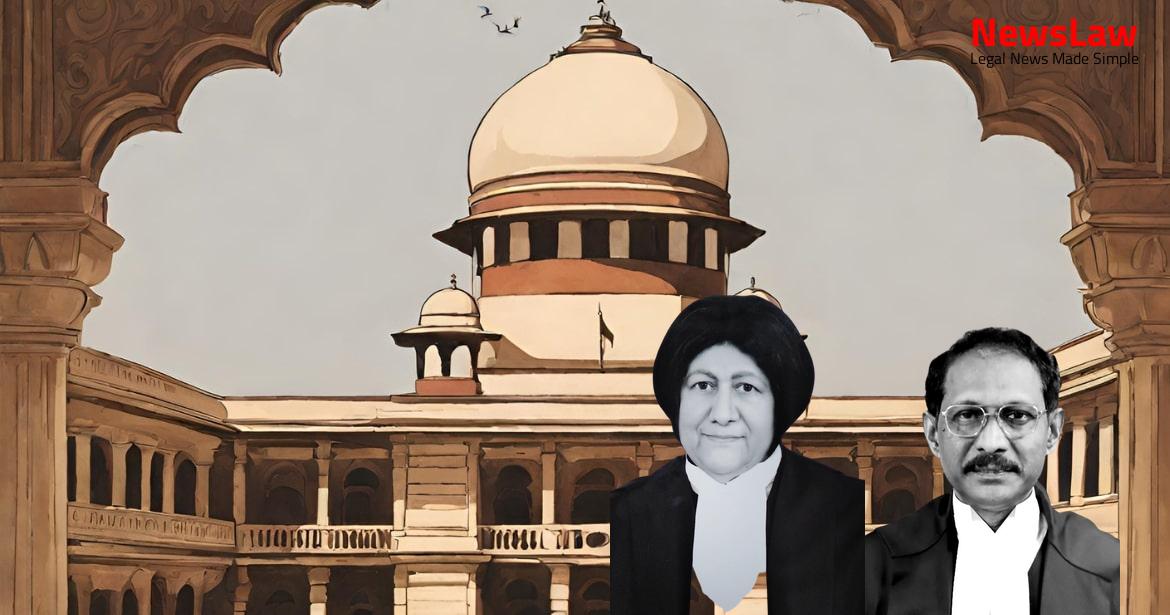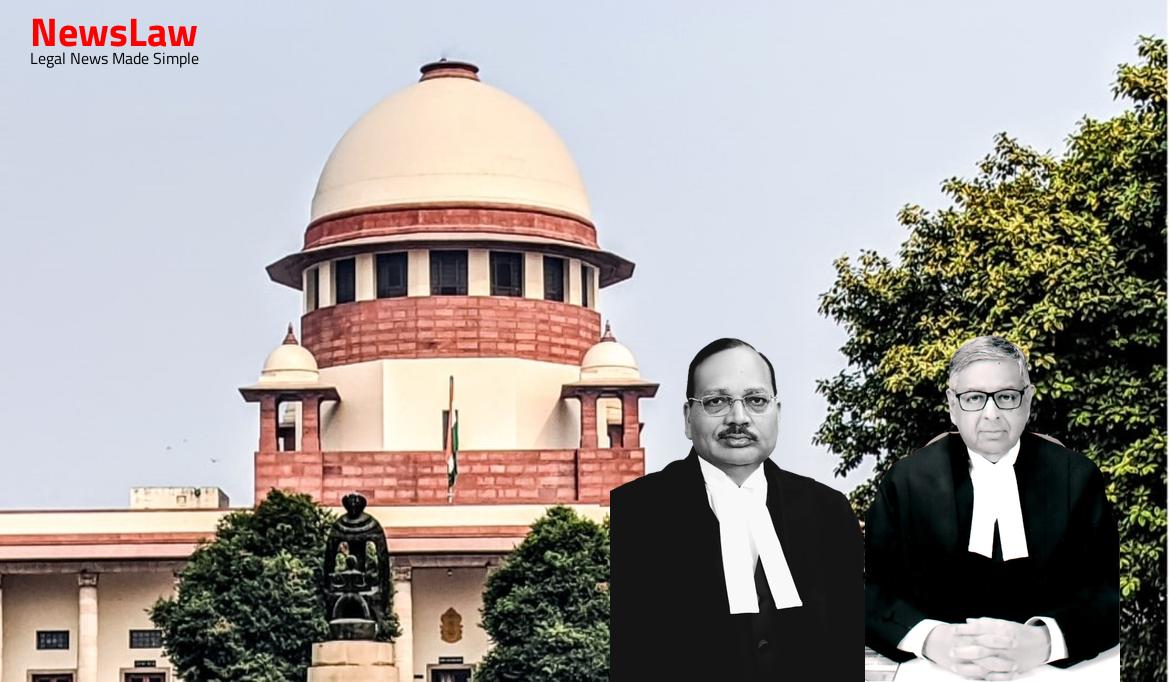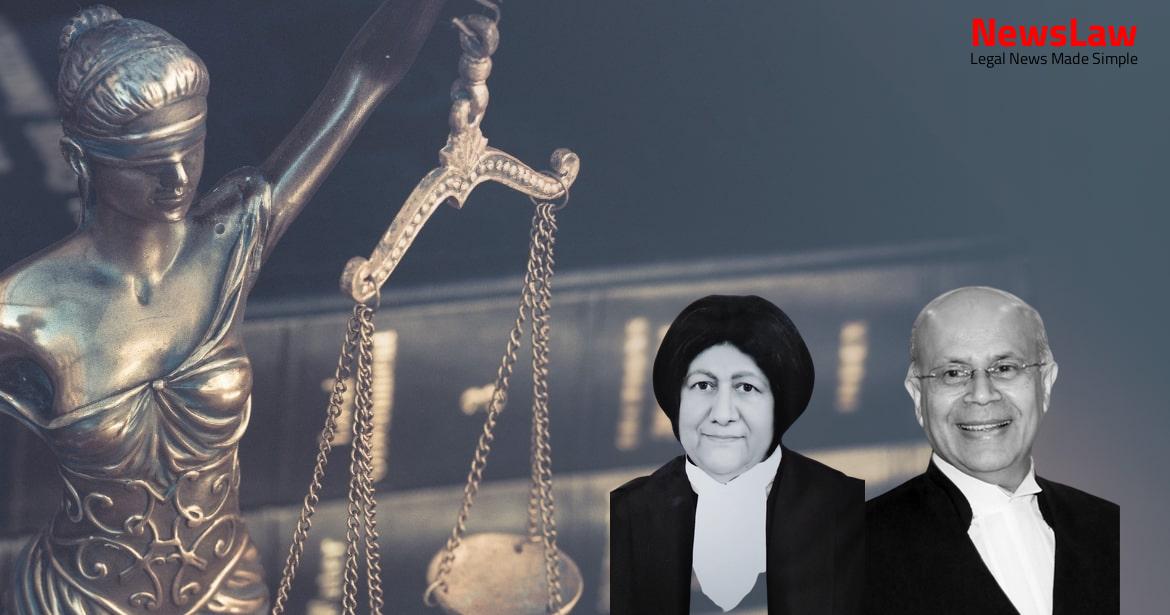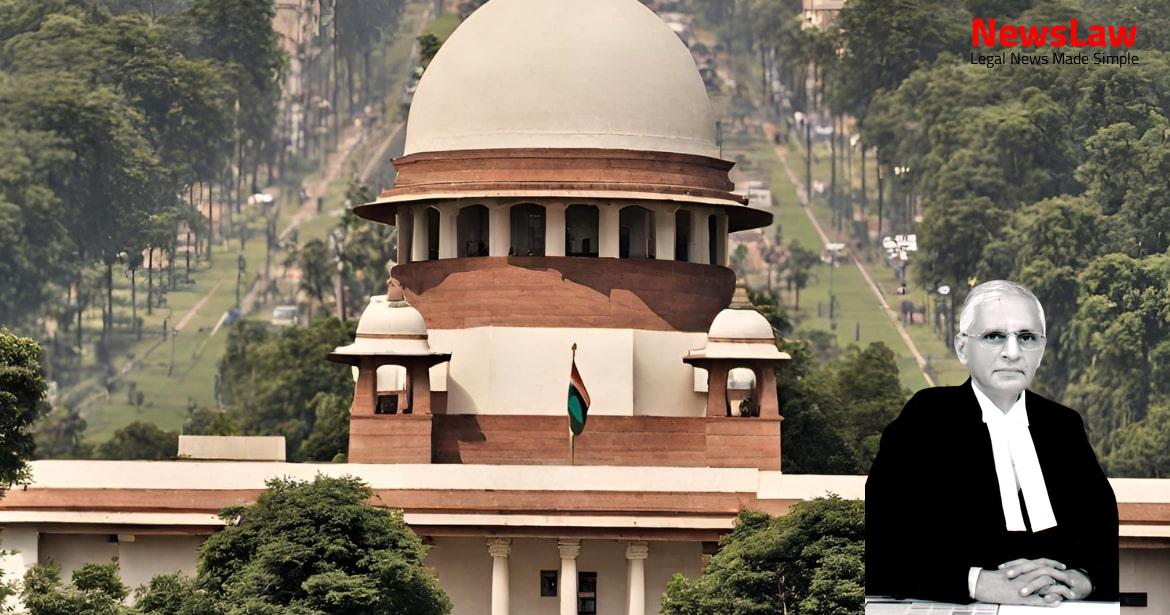In a recent court judgment, the analysis of circumstantial evidence played a pivotal role in determining the guilt of the accused in a heinous rape and murder case. Examining forensic reports, witness testimonies, and expert opinions, the court meticulously assessed the chain of events leading to the conviction. This summary focuses on the court’s in-depth legal analysis, showcasing how circumstantial evidence was key in reaching a verdict in the absence of direct proof.
Facts
- Prosecution case against the appellant for rape and murder of an 8-year-old girl
- Autopsy and forensic reports confirmed rape and death by throttling
- Appellant failed to explain incriminating circumstances during trial
- Charges framed under various sections of IPC and POCSO Act
- Evidence presented by prosecution included witness testimonies and documents
- Appellant was arrested on the day of the incident after a search
- Incident occurred at a ruined building in Gwalior district on 19.9.2014
- Appellant led authorities to the victim’s concealed body while in custody
- Conviction and sentence under Section 376A of IPC set aside on technical ground
- Conviction and sentences under Sections 376(2)(i) and 302 IPC and Section 6 of POCSO Act confirmed
- Trial for offences under various sections of IPC and POCSO Act conducted in Session Trial No.642/2014 before the Court of IInd Additional Sessions Judge, Dabra
- Conviction recorded for offences under Sections 302, 376A, 376(2)(i) IPC and Section 6 of POCSO Act
- Death sentence awarded on first two counts subject to confirmation by High Court, life sentence imposed on other counts
- Fine of Rs.2,000/- each imposed on all counts
- Substantive sentences ordered to run concurrently
- Reference made to High Court of Madhya Pradesh for capital punishment sentence under CRRFC.01/2015
- High Court partly allowed the appeal and reference made, result announced
- Evidence on record including chain of events and circumstantial evidence analyzed for conviction and sentencing
Also Read: Analysis of Financial Statements as Acknowledgment in Limitation Act Case
Issue
- The issue raised is whether the conviction under Section 302 IPC can be sustained in light of the medical evidence indicating that the deceased died from injuries to her private parts.
Also Read: Landmark Legal Analysis in Conviction Appeal Case
Arguments
- The petitioner argues that the conviction is based on circumstantial evidence and the chain of circumstances was not complete.
- Challenges the validity of the tests conducted on samples and the lack of clarity on the nature of tests performed.
- Questions the reliability of evidence regarding the scratches allegedly caused by the victim on the appellant.
- Points out discrepancies in the evidence regarding finger nail injuries on the appellant’s face.
- Objects to the reliance placed on certain issues due to the appellant being in police custody before formal arrest.
- Appellant is seeking the benefit of doubt due to lack of established continuity in the chain of circumstances leading to guilt.
- State’s counsel argues that the concurrent findings were the result of a proper analysis and appreciation of evidence by the trial court and High Court.
- The contention regarding failure to comply with Section 53A Cr.P.C. is deemed baseless as established by previous court decisions.
- Concurrent finding in favor of the prosecution regarding the rape and murder of the victim.
- Prosecution relied on expert opinion of Dr. D.C. Arya to establish rape and murder, but defense raises issues of discrepancies and lapses.
- Argument regarding blood group of blood stains found on the chopper being unascertainable and its impact on chopper recovery as evidence.
- Failure by serologist to detect blood origin does not mean it wasn’t human blood on the axe.
- Challenge made against the conclusion that the deceased was last seen with the accused, questioning the reliability of witnesses PW-2 and PW-4.
Also Read: Analysis of Territorial Jurisdiction in Arbitration Transfer Petition
Analysis
- When a person is arrested on a charge of committing an offense of rape or an attempt to commit rape, a detailed examination by a registered medical practitioner is required.
- The examination can be done by a medical practitioner employed in a government hospital or by a local authority, or within a 16-kilometer radius by any registered medical practitioner.
- Certain criteria are outlined for determining the severity of the offense, such as outrageousness, inhumane treatment, wanton nature, etc.
- It also includes situations where murder is committed to prevent lawful duties, enormous crimes, crimes on innocent victims, and crimes for total depravity.
- Instances where murder is committed without provocation, with the intention to create fear in the public, or for ransom are also highlighted.
- The offense of murder preceding a rape is analyzed in terms of intention and the likelihood of causing bodily harm leading to death.
- The classification of homicidal death under relevant clauses of Section 300 IPC is discussed.
- The analysis of the evidence by the trial court and the High Court established the guilt of the appellant in cases of rape and murder of an 8-year-old girl.
- The post-mortem report and expert opinion identified the cause of death as asphyxia due to throttling.
- Details of injuries sustained by the victim on her private parts were significant in determining the nature of the crime.
- The ‘last seen theory’ was applied to establish the connection between the appellant and the victim.
- DNA profiling was a critical aspect in the investigation, although not conducted as per the legal provisions under Section 53A Cr.P.C.
- The appellant’s failure to explain incriminating circumstances further pointed to his guilt.
- Admissibility of evidence, including recovery of clothing, was thoroughly examined, supporting the conclusion of guilt.
- The gruesome and heinous nature of the crime, combined with other aggravating circumstances, led to the imposition of capital punishment by the trial court.
- The absence of the deceased girl post-last sighting and the sequence of events supported the conviction for rape and murder.
- The analysis of witness testimonies and forensic reports led both the trial court and the High Court to conclude on the appellant’s guilt.
- A witness is considered independent unless there is cause to implicate falsely out of enmity against the accused.
- Failure to produce available DNA evidence leads to adverse presumption against the prosecution.
- Discovery of the body at the instance of the accused is a crucial circumstance in circumstantial evidence cases.
- In cases where a life sentence is inadequate but death sentence is unwarranted, a just and reasonable course is adopted.
- Rebutting the evidence of last seen requires the accused to lead evidence to prove innocence.
- High Court’s consideration of cumulative effect of circumstantial evidences and supporting materials hold weight in decisions.
- Investigation lapses should not be the sole reason for interference in a judgment if other evidence is cogent.
- Relatives should not be presumed untruthful witnesses without reason shown for partiality.
- Spermatozoa vitality period and detection durations mentioned from legal authority.
- High Court’s reliance on various incriminating circumstances to confirm appellant’s conviction is justified.
- Appellant to be awarded punishment of imprisonment for life for the offence punishable under Section 302 IPC
- Actual imprisonment for a period of 30 years without application of premature release/remission
- Conviction for offences under Section 302, 376(2)(i) IPC, and Section 6 of POCSO Act upheld
- Death sentence commuted to imprisonment for life for offence under Section 302 IPC
- No entitlement to premature release or remission before serving 30 years of actual imprisonment
- All substantive sentences to run concurrently
- Sentences, fine amounts, and default stipulations confirmed
Case Title: VEERENDRA Vs. STATE OF MADHYA PRADESH (2022 INSC 565)
Case Number: Crl.A. No.-000005-000006 / 2018



